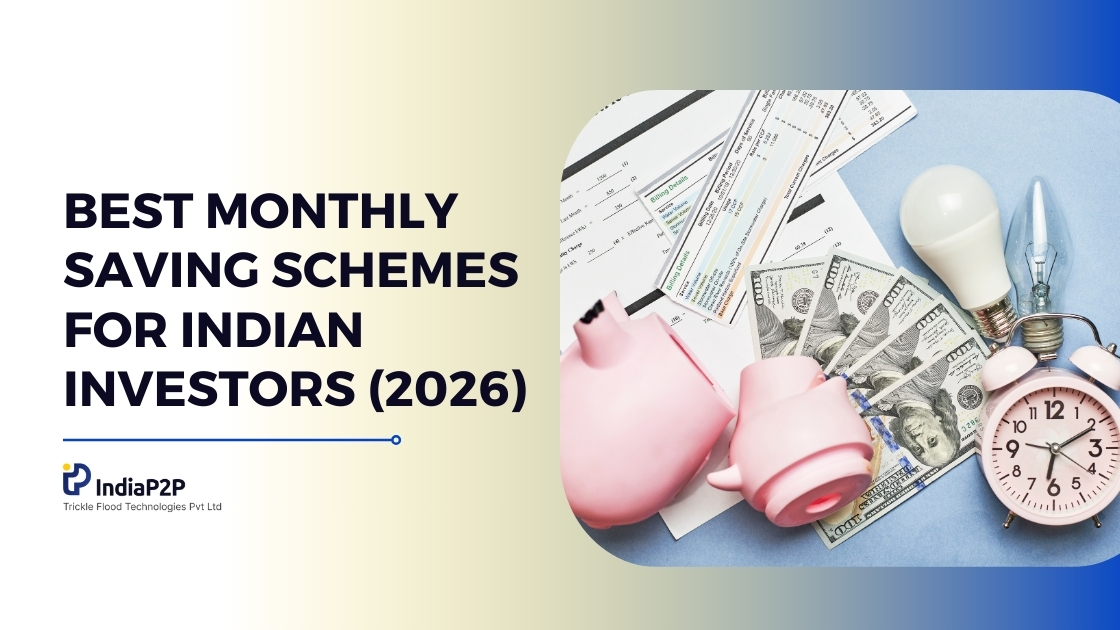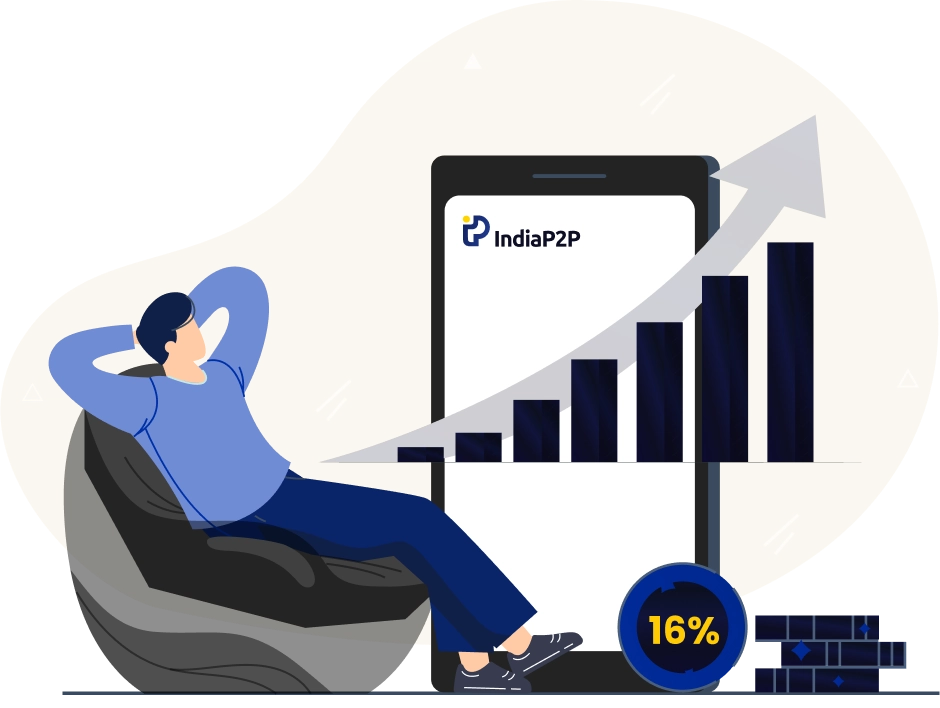Best Monthly Saving Schemes for Indian Investors (2026)

Saving money is a key aspect of financial planning and financial stability, and one of the most effective ways to cultivate a savings habit is through monthly saving schemes. In India, there are various options available for individuals looking to save systematically.
In this blog, we'll explore some of the best monthly saving schemes in the country, along with their list of pros and cons, helping you make informed decisions to secure your financial future.
List of the best monthly savings schemes
Below, we are going to cover the best investment options as well as saving schemes that every Indian must consider.
🔵 Public Provident Fund (PPF):
The Public Provident Fund (PPF) is a popular long-term monthly savings and investment scheme in India, introduced by the government to encourage individuals to save for their retirement.
Pros of PPF:
⦿ Attractive Interest Rates: PPF usually offers higher interest rates compared to regular savings accounts.
⦿ Tax Benefits: Contributions up to a specified limit are eligible for tax deductions under Section 80C.
⦿ Safety and Security: Backed by the government, PPF is considered a safe investment avenue.
Cons of PPF
⦿ Lock-in Period: The maturity period is fixed at 15 years, limiting liquidity.
⦿ Withdrawal Restrictions: While partial withdrawals are allowed, there are restrictions during the initial years.
🔵 Recurring Deposit (RD) (A Secure Monthly Saving Scheme)
A Recurring Deposit (RD) is a monthly savings scheme offered by banks and financial institutions that allows individuals to make regular, fixed monthly deposits over a predetermined period. RDs are a type of term deposit where customers commit to contributing a specific amount at regular intervals, usually monthly, for a fixed duration.
Pros of A Recurring Deposit (RD)
⦿ Flexible Tenure: Investors can choose the tenure based on their financial goals, ranging from 6 months to 10 years.
⦿ Ease of Investment: Requires a fixed monthly deposit, making it suitable for salaried individuals.
⦿ Fixed Interest Rates: RDs provide a fixed interest rate, offering predictability.
Cons of A Recurring Deposit (RD)
⦿ Interest Rate Risk: The interest rates are fixed at the time of investment, and changes in market rates do not impact existing RDs.
⦿ Penalties for Default: Missing a monthly deposit may result in penalties.
🔵 Systematic Investment Plan (SIP) in Mutual Funds:
A Systematic Investment Plan (SIP) is a disciplined and convenient way to invest in mutual funds. It allows investors to contribute a fixed amount at regular intervals, usually monthly, into a mutual fund scheme of their choice. Unlike lump-sum investments, where an individual invests a large amount in one go, SIPs enable investors to spread their investment over time.
This systematic approach helps in mitigating the impact of market volatility, as the fixed amount buys more units when prices are low and fewer units when prices are high. SIPs offer flexibility in terms of investment amounts and can be started with relatively small sums, making them accessible to a wide range of investors.
The key benefits of SIPs include rupee cost averaging, the power of compounding, and the ability to harness market fluctuations for potential long-term gains. SIPs are suitable for individuals seeking a disciplined and gradual approach to mutual fund investments, with options available across various asset classes based on risk appetite and financial goals.
Pros of Systematic Investment Plan (SIP)
⦿ Diversification: Provides exposure to a diversified portfolio, reducing risk.
⦿ Flexibility: Investors can start with a small amount and increase investments gradually.
⦿ Professional Management: Managed by experienced fund managers.
Cons of Systematic Investment Plan (SIP)
⦿ Market-Linked Risk: Returns are subject to market fluctuations, and the value of investments can go up or down.
⦿ Fees and Expenses: Mutual funds may charge fees, impacting overall returns.
🔵 National Pension System (NPS):
The National Pension System (NPS) is a voluntary retirement savings scheme introduced by the Government of India.
It operates in two tiers:
Tier-I, a mandatory pension account with restrictions on withdrawals, and Tier-II, a voluntary savings account.
NPS allows individuals to contribute regularly during their working years, with investments diversified across asset classes, making it one of the best monthly savings schemes.
Subscribers of this scheme enjoy tax benefits on contributions, and the scheme offers flexibility through various investment options.
Tier-I has a lock-in period, and partial withdrawals are allowed under specific conditions. At retirement, subscribers can withdraw a lump sum and use the remaining corpus to purchase an annuity for a regular pension. NPS promotes systematic savings, professional fund management, and portability, making it an effective tool for building a retirement corpus and ensuring financial security during post-retirement years.
Pros of NPS
⦿ Market-Linked Returns: NPS offers a mix of equity and debt funds, providing market-linked returns.
⦿ Tax Benefits: Contributions are eligible for tax deductions, and a portion of the corpus can be withdrawn tax-free.
⦿ Flexibility in Contributions: Investors can choose their asset allocation based on risk tolerance.
Cons of National Pension System (NPS)
⦿ Lock-in Period: Withdrawals are restricted until retirement, providing limited liquidity.
⦿ Market Risk: Returns are subject to market fluctuations, posing a risk to capital.
🔵 Post Office Monthly Income Scheme (POMIS):
The Post Office Monthly Income Scheme (POMIS) is a savings scheme offered by India Post, the country's postal department.
It is designed to provide individuals with a regular and fixed monthly income. Under POMIS, investors make a one-time deposit, and in return, they receive a fixed interest income on a monthly basis for a specified tenure.
The scheme is considered a low-risk investment option as it is backed by the government, and the interest rates are fixed at the time of investment. POMIS is particularly popular among conservative investors, including retirees, seeking a steady income stream without exposing their capital to market risks. While the interest income is taxable, the scheme offers a simple and accessible way for individuals to secure a reliable monthly income through their investments.
Pros of Post Office Monthly Income Scheme (POMIS)
⦿ Fixed Income: POMIS ensures a fixed monthly income, making it suitable for retirees.
⦿ Government Backing: Being a government-backed scheme, it offers security.
⦿ Ease of Access: Available in post offices across the country.
Cons of Post Office Monthly Income Scheme (POMIS)
⦿ Fixed Returns: Interest rates are fixed, and returns may not keep pace with inflation.
⦿ Limited Tenure: The scheme has a fixed tenure, and reinvestment options may have different interest rates.
🔵 Peer-to-Peer (P2P) Lending: Monthly interest earnings
P2P lending platforms that connect borrowers with individual lenders, facilitating direct lending and borrowing without the involvement of traditional financial institutions. This has become one of the best monthly earnings products in India recently. P2P lending is regulated by the Reserve Bank of India (RBI), and only RBI-certified platforms can operate.
Pros of P2P Lending
⦿ High Returns: Lenders can potentially earn higher returns compared to traditional savings avenues.
⦿ Diversification: Investors can spread their investment across multiple borrowers to minimize risk.
⦿ Accessibility: P2P lending platforms provide easy online access for both borrowers and lenders.
Cons of P2P Lending
⦿ Default Risk: Borrowers may default on their loans, leading to potential losses for lenders.
Monthly Saving Schemes Comparison (2025)
| Scheme | Regulation | Risk Profile | Expected Return | Monthly Payout? |
| P2P Lending | RBI-NBFC | Moderate/Diversified | High 9-18% | YES |
| SCSS | Government | Low | Fixed (e.g., 8.2%) | YES |
| POMIS | Government | Low | Fixed (e.g., 7.4%) | YES |
Conclusion:
Choosing the best monthly savings scheme in India depends on your financial goals, risk tolerance, and investment horizon. It's crucial to evaluate each option carefully and consider consulting with a financial advisor for personalized advice. Remember, a systematic and disciplined approach to saving can go a long way in achieving your financial objectives. Start today and secure a brighter financial future for yourself and your loved ones. While you are planning your monthly investment and saving strategy, make sure that you diversify your investment portfolio. There are several benefits of diversifying your investment portfolio, like security, mitigating risk, and more… So, ensure you take advantage of portfolio diversification.




